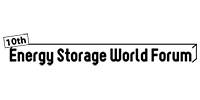 Although electrical energy storage is considered the missing link between majority-renewable grids and consistent, sustainable power, the sector is being held back by a lack of standardisation. Clear, wide-ranging standards, in addition to a regulatory environment that recognises the significance of energy storage, are sorely needed.
Although electrical energy storage is considered the missing link between majority-renewable grids and consistent, sustainable power, the sector is being held back by a lack of standardisation. Clear, wide-ranging standards, in addition to a regulatory environment that recognises the significance of energy storage, are sorely needed.
Creating and following technical standards improves enterprise resource use — no reinventing the wheel —, facilitates penetration of new technologies across regional, national and international markets, and allows faster and more effective integration into existing systems. So what would effective standards look like for the energy storage sector?
Both governments and the private sector have identified several areas where further standardisation is essential. First, to ensure that energy storage terms are referred to using a common language; while several standards committees are working on the issue, as it stands vendors and consumers in separate — and sometimes, even the same — markets can find themselves comparing apples to oranges.
In addition to a common language for system definitions, common standards are needed for energy storage metrics — efficiency, capacity, power ratings, system inefficiencies — and testing methods. Standard testing methods must be outlined not only for proving component functionality but for system functionality at the point of connection to the grid.
Another issue is that current standards can be both too specific and not specific enough. In the first case, initial standards regarding energy storage were too highly focused on the particular technology — with new batterychemistries being developed every year, this way of issuing standards slows the adoption of new innovations. In the second case, vendors looking to develop their own hardware and systems lack incentive to make their proprietary products play nicely with others.
Private and public sector initiatives are taking place to expand and clarify energy storage standards, both regionally and internationally. Potentially the most impactful of these will come from IEC TC 120 (International Electrotechnical Commission – Technical Committee), expected to publish its new standards at the end of 2017. IEC TC 120 has focused on taking a technology-agnostic, systems based approach.
The brains behind MESA (Modular Energy Storage Architecture), in comparison, are working to develop standards at the component level. Fragmented markets with multiple competing suppliers find that multi-vendor systems are plagued with integration problems.





